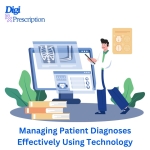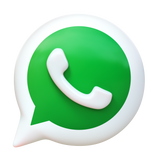
Managing Patient Diagnoses Effectively Using Technology
The healthcare industry is undergoing a digital revolution, with advanced technology playing a pivotal role in managing patient diagnoses. From improving diagnostic accuracy to streamlining workflows, technology empowers doctors to provide faster, more precise care. This blog explores how medical professionals can effectively manage patient diagnoses using modern technological solutions.
1. Centralized Patient Records for Informed Decisions
One of the most significant advantages of technology is the ability to store and access centralized patient records.
- Comprehensive History:
Electronic Health Records (EHRs) consolidate a patient’s medical history, lab results, prescriptions, and imaging reports in one place. - Improved Continuity of Care:
Physicians can review past diagnoses and treatments to make more informed decisions. - Real-Time Updates:
Patient records are updated in real-time, ensuring that doctors always have the latest information.
2. AI-Powered Diagnostic Tools
Artificial intelligence (AI) is transforming the way doctors diagnose illnesses.
- Symptom Analysis:
AI systems analyze symptoms to suggest potential diagnoses based on vast datasets of medical knowledge. - Pattern Recognition:
Machine learning algorithms identify trends in patient data, aiding in early detection of chronic conditions or diseases. - Decision Support:
AI tools assist doctors in evaluating multiple diagnostic possibilities, reducing human error.
3. Remote Monitoring for Proactive Diagnosis
Wearable devices and IoT technology enable remote monitoring of patients, allowing for proactive diagnosis and care.
- Health Tracking Devices:
Devices like smartwatches monitor vital signs, such as heart rate, blood pressure, and oxygen levels, and send alerts for abnormalities. - Chronic Disease Management:
Patients with conditions like diabetes or hypertension can be monitored continuously, reducing the risk of complications.
4. Digital Tools for Streamlined Prescription Writing
Accurate diagnoses often depend on precise and error-free prescriptions.
- Drug Database Integration:
Prescription software integrates with drug databases, ensuring appropriate medication selection based on the diagnosis. - Automated Alerts:
Doctors receive warnings about potential drug interactions, allergies, or contraindications, reducing prescription errors. - Time Efficiency:
Digital tools enable doctors to write and print prescriptions in under a minute, saving valuable time.
5. Telemedicine for Improved Accessibility
Telemedicine solutions, including video consultations, bring healthcare to patients regardless of their location.
- Faster Consultations:
Doctors can diagnose and treat patients virtually, improving access to care in rural or underserved areas. - Secure Communication:
Digital platforms ensure secure and private interactions between doctors and patients, fostering trust. - Follow-Up Made Easy:
Virtual follow-ups reduce the need for in-person visits while ensuring ongoing care.
6. Advanced Imaging and Diagnostic Devices
Modern diagnostic devices provide highly detailed results, aiding in accurate diagnoses.
- AI in Imaging:
AI tools analyze medical images like X-rays, MRIs, and CT scans, identifying abnormalities with high precision. - Portable Devices:
Handheld diagnostic tools, such as portable ultrasound machines, make on-the-spot diagnoses possible.
7. Analytics for Predictive and Preventive Care
Technology allows healthcare providers to shift from reactive to proactive care models.
- Predictive Analytics:
By analyzing patient data, predictive tools can identify individuals at risk of developing certain diseases. - Preventive Interventions:
Early identification enables timely interventions, improving outcomes and reducing healthcare costs.
Conclusion
Technology is redefining the way doctors manage patient diagnoses, making the process more accurate, efficient, and patient-centered. By leveraging tools like AI-powered diagnostic systems, remote monitoring devices, and telemedicine platforms, medical professionals can deliver better care and improve patient outcomes. Adopting these technologies is no longer optional but essential for staying ahead in the rapidly evolving healthcare landscape.
